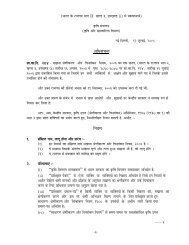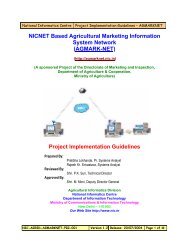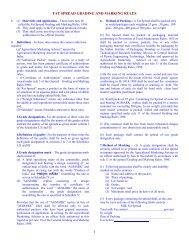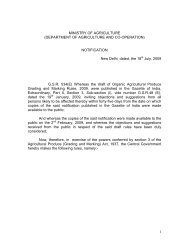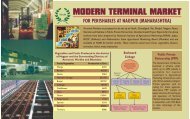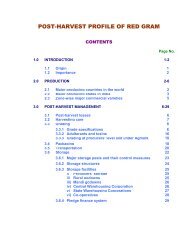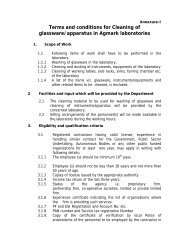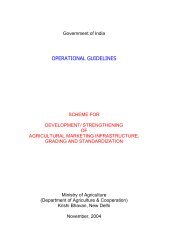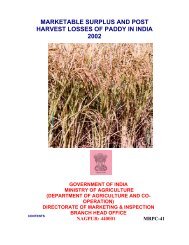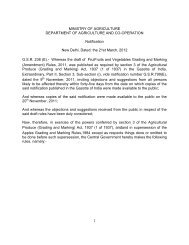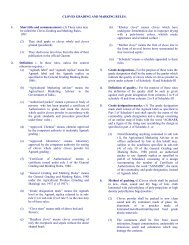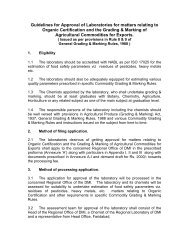Post-Harvest Profile of Grapes - Agmarknet
Post-Harvest Profile of Grapes - Agmarknet
Post-Harvest Profile of Grapes - Agmarknet
Create successful ePaper yourself
Turn your PDF publications into a flip-book with our unique Google optimized e-Paper software.
4.3.1 SANITARY AND PHYTO-SANITARY (SPS) REQUIREMENTS:<br />
The Sanitary and Phyto-sanitary (SPS) measures are an integral part <strong>of</strong> export<br />
and import trade under WTO. The aim <strong>of</strong> the agreement is to prevent risk <strong>of</strong><br />
introduction <strong>of</strong> new pests and diseases in new regions i.e. importing countries. As per<br />
provisions made under this agreement, the standards framed should be such that the<br />
minimum level <strong>of</strong> protection required by an importing country should be fulfilled. In<br />
order to achieve this objective, the agreement provided setting up <strong>of</strong> international<br />
standards and guidelines under the aegis <strong>of</strong> Codex Alimentarius Commission (Codex).<br />
Under the joint aegis <strong>of</strong> FAO/WHO, guidelines and related texts such as Codex Code<br />
<strong>of</strong> Practices was finalised. Food standard programmes were aimed to protect health <strong>of</strong><br />
the consumers and ensuring fair trade practices in the food trade as well as to<br />
promote co-ordination <strong>of</strong> all food standards work undertaken by international<br />
government and non-government organisation.<br />
The SPS agreement applies to all Sanitary and Phyto-Sanitary measures,<br />
which may directly or indirectly, affect international trade. Sanitary measures deal with<br />
human or animal health, and Phyto-Sanitary measures are related to plant health.<br />
SPS measures are applied in four situations for the protection <strong>of</strong> human, animal<br />
or plant health:<br />
‣ Risks arising from the entry, establishment or spread <strong>of</strong> pests, diseases, diseasecarrying<br />
organisms or disease causing organisms.<br />
‣ Risks coming from additives, contaminants, toning or disease-causing organisms<br />
in foods, beverages or feedstuffs.<br />
‣ Risks arising from diseases carried by animals, plants or products there<strong>of</strong>, or from<br />
the entry, establishment or spread <strong>of</strong> pests.<br />
‣ Prevention or limitation <strong>of</strong> damage caused by the entry, establishment or spread <strong>of</strong><br />
pests.<br />
4.3.2 EXPORT PROCEDURES:<br />
Export process followed by Mahagrapes for export <strong>of</strong> grapes:<br />
1. Importer-Exporter code (IE code) number is to be obtained from the Director<br />
General <strong>of</strong> Foreign Trade (DGFT).<br />
2.<br />
Register with the concerned Export Council/Authority e.g. Agricultural and<br />
Processed Food Export Development Authority (APEDA) to obtain registration<br />
cum membership certificate and it is also required to obtain permissible benefit<br />
from government.<br />
3. Quality <strong>of</strong> grapes is to be assessed by inspecting agency to obtain the certificate.<br />
44




